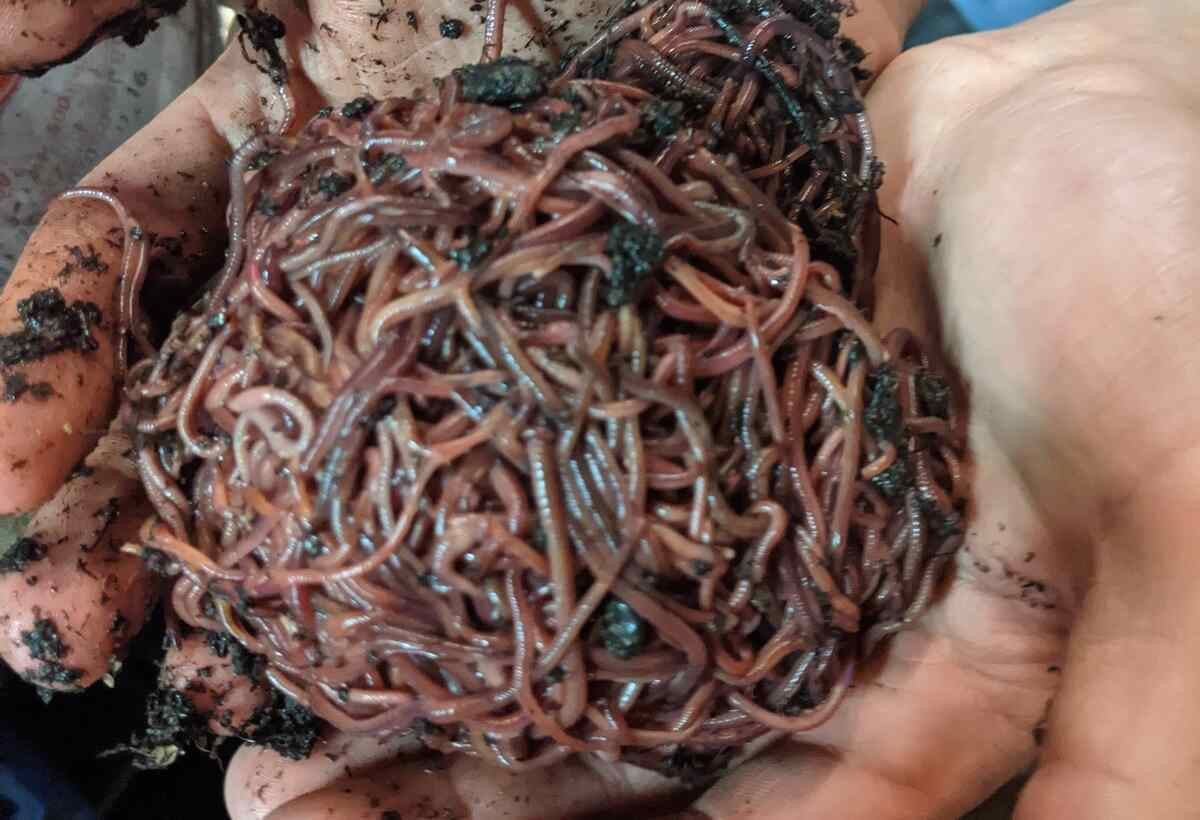Why Red Wigglers Are the most effective Choice for Your Composting Requirements
Red wigglers have actually become an exceptional choice for composting due to their amazing capacity to effectively break down natural issue while creating premium worm castings. Their flexibility to numerous atmospheres enables versatile applications, making them ideal for both metropolitan and country composting configurations. Moreover, the nutrient profile of their spreadings substantially benefits dirt health, promoting sustainable horticulture practices. Nevertheless, the trip to successful vermicomposting includes more than simply obtaining these worms, and recognizing the excellent problems and mistaken beliefs surrounding them is important for optimizing their capacity.
Advantages of Red Wigglers

Red wigglers grow in a variety of conditions, making them versatile to various composting setups, from tiny containers to larger systems. They succeed in vermicomposting, where their task creates a top notch final result called worm castings, rich in helpful bacteria and nutrients important for plant growth. This all-natural plant food advertises dirt health and wellness, boosts moisture retention, and enhances plant resilience against parasites and illness.
In addition, using red wigglers can significantly decrease methane discharges associated with land fill waste, adding to ecological sustainability. Their convenience of treatment and marginal maintenance needs make them ideal for both amateur and seasoned composters. Inevitably, incorporating red wigglers right into your composting approach not just cultivates reliable waste monitoring however also boosts the top quality of your compost.
Ideal Composting Conditions
Developing optimal composting conditions is necessary for optimizing the performance of red wigglers in damaging down raw material. These worms grow in a regulated atmosphere that imitates their all-natural habitat, which primarily contains wet, dark, and well-aerated areas. To accomplish this, maintaining a temperature variety of 55 ° F to 77 ° F is critical, as severe temperatures can inhibit their task and even cause mortality.
(red wigglers for sale)Dampness degrees need to likewise be thoroughly kept track of; red wigglers require a damp environment, preferably around 70% wetness material. Way too much wetness can cause anaerobic conditions, while insufficient dampness can trigger dehydration. Additionally, a balanced carbon-to-nitrogen proportion, preferably around 25:1 to 30:1, supports optimum food digestion and nutrient biking.
Furthermore, the composting medium should be maintained loosened and aerated, enabling proper air movement. This not only benefits the worms however also help in the break down of natural products. By making sure these ideal problems, composters can create a growing environment that enhances the effectiveness of red wigglers, eventually bring about rich, nutrient-dense garden compost.
Exactly How to Beginning Vermicomposting
Beginning vermicomposting is an uncomplicated process that can produce substantial benefits for both your yard and the atmosphere. To begin, choose a suitable container, such as a plastic bin or a wood box, ensuring it has air flow openings for airflow. A dimension of about 15 to 20 gallons is suitable for small-scale operations.
Next, prepare the bed linen product, which should be a mix of shredded paper, cardboard, and coconut coir. This bed linens provides a comfy habitat for the worms while maintaining dampness. Go for a bed linen deepness of about 4 to 6 inches.
Once the bed linen is all set, present red wigglers into the container. A populace of about 1,000 worms is sufficient for processing cooking area scraps properly. After adding the worms, integrate a well balanced mix of environment-friendly materials, such as fruit and vegetable scraps, along with brownish products, like dried leaves.

Nutrient-Rich Spreadings
(red wiggler earthworms for sale)The red wigglers in your vermicomposting system play a crucial function in generating nutrient-rich castings, a very popular organic fertilizer. These spreadings, usually described as worm humus, are the result of the worms absorbing natural issue and eliminating it in a kind that is unbelievably helpful for plants.
Rich in vital nutrients such as nitrogen, phosphorus, and potassium, worm castings provide a balanced source of fertility that boosts dirt structure and promotes healthy plant growth. Furthermore, they have valuable bacteria that further boost dirt wellness, helping in visit nutrient absorption and illness resistance.
The slow-release nature of worm spreadings guarantees that nutrients are offered to plants over an extensive period, lowering the danger of nutrient leaching and thus adding to lasting gardening practices. Unlike artificial plant foods, which can bring about soil destruction with time, worm castings enhance the dirt's physical, chemical, and organic residential properties.
Because of this, integrating red wigglers into your composting efforts not only minimizes waste yet additionally produces a premium natural change that significantly benefits yards, landscapes, and potted plants alike. - red wigglers
Common Misconceptions About Worms
While lots of people identify the advantages of making use of worms in composting, several misconceptions linger about their biology and actions. One usual myth is that all worms are just as efficient for composting, when actually, just certain species, like red wigglers, thrive in organic waste settings. These worms are specifically adjusted to composting, making them optimal for this objective.
An additional false impression is that worms are fragile and require extremely specific conditions to survive. In truth, red wigglers are quite resilient, able to tolerate a variety of temperatures and moisture levels, provided they are kept within a suitable range.
Additionally, some believe that worms consume all kinds of food waste indiscriminately. Red wigglers like particular natural products, such as fruit and veggie scraps, and can have a hard time with meat, dairy products, and oily foods, which can produce odors and attract insects.
Conclusion
In verdict, red wigglers stand for an ideal option for composting due to their rapid decay capabilities and adaptability to numerous atmospheres. Comprehending the excellent conditions for vermicomposting and addressing usual false impressions regarding these worms even more solidifies their role in effective waste monitoring.